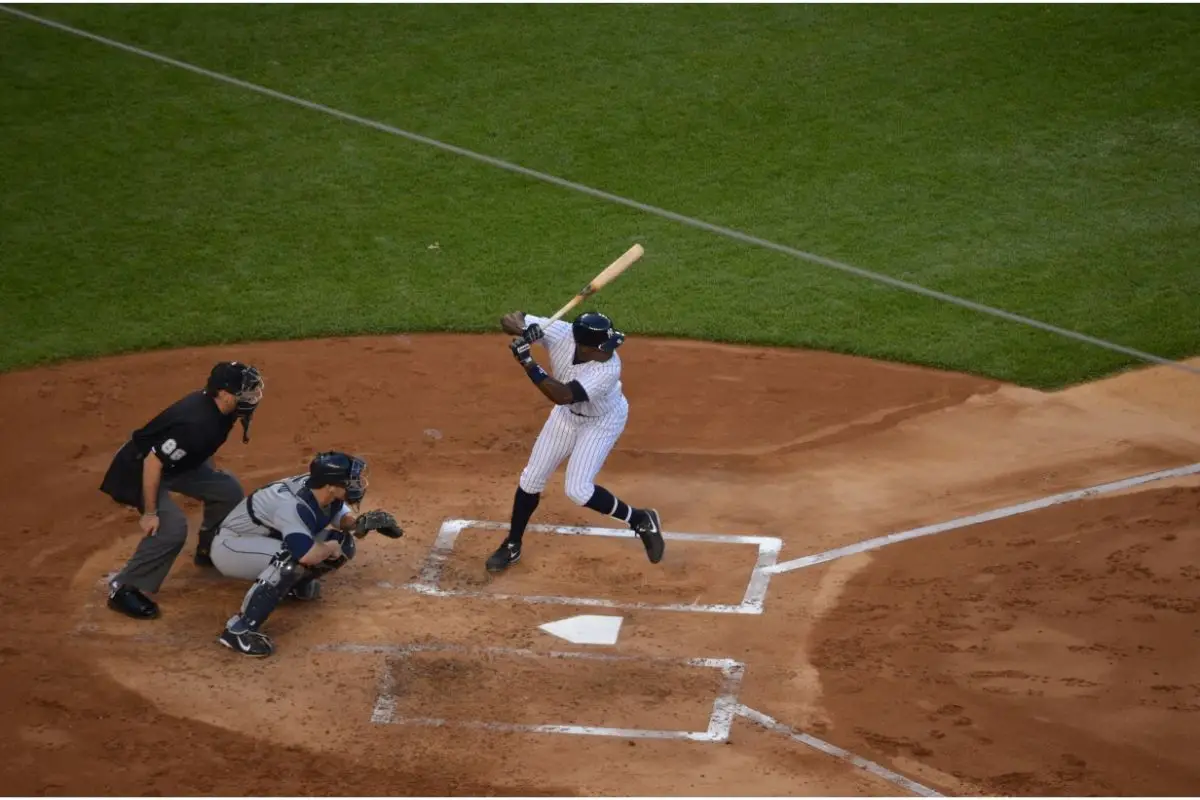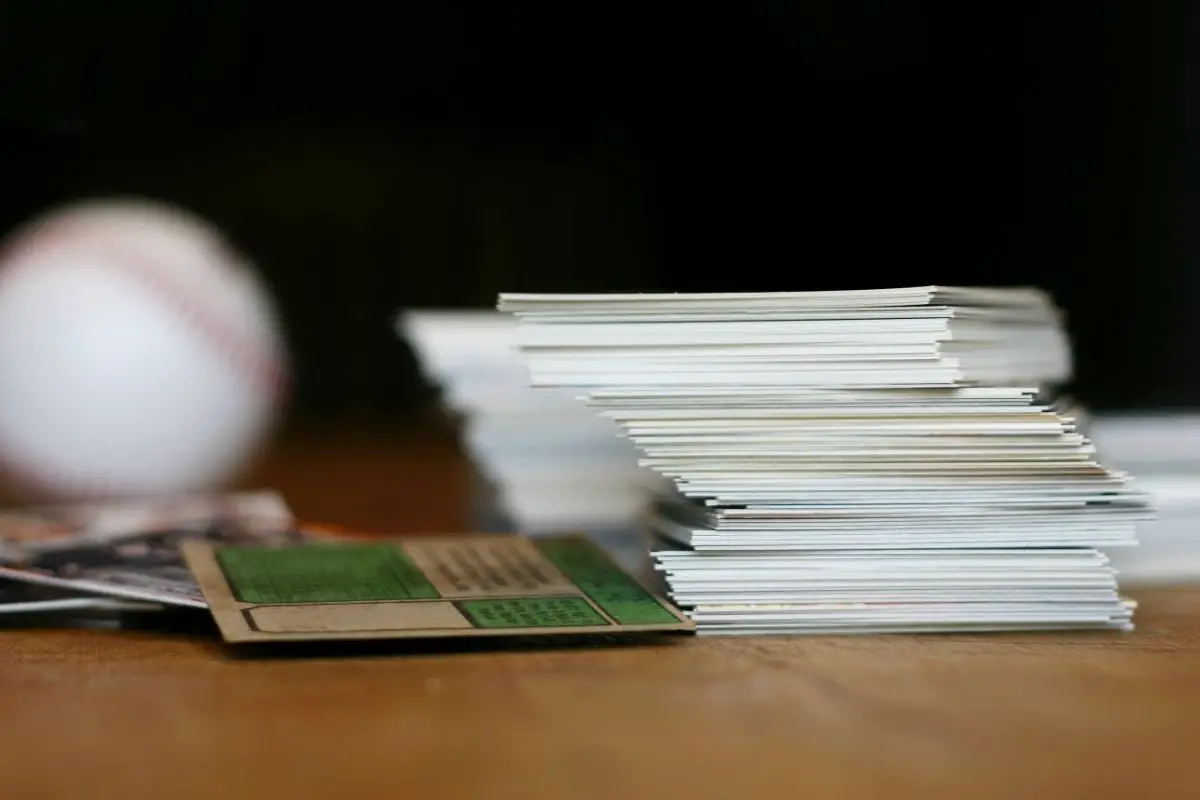The 90s was a weird decade for baseball and this has greatly affected the value of baseball cards from that decade.

The ‘junk wax era’, the player’s strike of 1994, and the occurrence of Michael Jordan appearing for the White Sox make this a challenging era for baseball.
Are your 90’s baseball cards worth anything? In the main. probably not i’m afraid.
In this guide, we will look at why baseball cards are so poorly valued and which baseball cards may be worth something.
Why 90s Baseball Cards Are So Poorly Valued
If your collection of baseball cards began in the 90s then dumping the box on a sports card shop counter may be deflating.
Sure, to you, the box of cards represents your childhood and the early years of your love for baseball. The heady mix of Upper Deck hologram and Fleer team logo stickers may have huge, sentimental value for you but they may be of little value at all.
Many remember baseball in the 90s for that weird time when Michael Jordan decided to opt out of handling a basketball for hitting homers.
Even the card of him in batting practice with the White Sox may seem like it should be worth a lot, yet that was decades ago and in the modern world, it has a negligible value, if any.
The problem is that if anyone wanted that card of Michael Jordan, they tend to already have it. So many cards were made in the 90s that supply and demand dictates that the value would be down.
With so many baseball cards in circulation at the time, many collectors hoarded them thinking they were rarer than they actually were.
While they were still kept in a safe place for a decade or two, when it eventually came to selling them they somewhat overloaded many sports card shops. Such a huge supply also indicated that the value of baseball cards would eventually diminish, and it did.
The initial interest in collecting baseball cards was between fans who appreciated their value and scarcity. Yet with more cards came more interest and that came from investors who were keen to see a monetary value, rather than an emotional one.
Without knowing how poor the actual value of the cards was due to how many of them were in circulation, many investors got in early so when collectors tried to cash in a lot of the impetus was lost.
With investors stealing a march, few are now buying the same cards and the value has diminished.
As the hobby of collecting baseball cards shifted from being played with and studied, their value came down too. Compare a card that is expected to be looked after and of which there are thousands of copies available compared to a vintage card from a bygone age when the card was expected to be handled.
For that reason alone, a vintage Mickey Mantle card will be worth a lot more, not just for the rarity of the card but how unexpected it should prove to find one that is in such good condition.
Baseball card producers also recognized that they could introduce limited edition cards, yet now the expectation was that they would be looked after properly.

Cards such as the 1990 Donruss Baseball set came with red borders yet you could hold them in a page to ensure that the mint condition stayed just so.
There is now an expectation that baseball cards from the 90s should be in excellent condition because the intention is to keep them that way.
The Valuable 90s Baseball Cards
One valuable baseball card from the 90s is that of Chipper Jones’ rookie card from the 1993 Shortstop Prospects Topps collection.
As #529, it remains one of the most collectible baseball cards from that era and can sell for close to four figures in mint condition.
A general set to look out for is the 1991 Donruss Elite inserts which were the first serial numbered and limited cards, even though they were limited to 10,000 copies.
Also, early Upper Deck sets featuring rookie players that went on to achieve Baseball Hall of Fame greatness should be worth something.
Derek Jeter has several cards from the 90s that could all prove valuable. This includes #449 in the 1993 Upper Deck Gold Hologram set, #98 in the Topps Rookie Card set, and #H14 from the 1995 Upper Deck Predictor Award Winners Prizes Set.
This is largely due to what Jeter went on to do in the game as he spent his whole 20-year Major League Baseball career with the New York Yankees.
He was also admitted to the Baseball Hall of Fame in the very first year he was eligible in 2020, receiving 99.75% of the votes.
Final Thoughts
The 90s were a strange time for baseball. Michael Jordan was playing for the White Sox and the ‘junk wax era’ meant that so many baseball cards were being produced that few could be considered rare.
Unless you have cards from rookies that went on to the Baseball Hall of Fame, chances are your cards will not be worth much.
Frequently Asked Questions
What Is Known As The ‘Junk Wax Era’ Of Baseball Cards?
The value of your 90s baseball cards may be so low down due to the ‘junk wax era’. This was a period between 1987 and 1994 when card-producing companies created three times as many baseball cards as they had before.
This was partly due to the higher public demand for baseball cards and also greed from the companies themselves.
With an influx of new card collectors all wanting cards, the card-producing companies were happy to oblige to fill their coffers, yet the eventual value of those cards was lower than it should have been if fewer cards had been produced.
How Does Supply And Demand Affect The Value Of Baseball Cards?
The laws of supply and demand dictate that if there is an excessive amount of any product, its eventual value diminishes.
What also did not help during the ‘junk wax era’ was that the period was not just marred by the excessive production of baseball cards but the baseball player’s strike of 1994.
Such an event rocked the game of baseball and reduced its national appeal. With too many cards and easier ways that they could be looked after, there were few cards considered truly rare.
- Mac Jones Rookie Cards – Our favorite picks - October 21, 2022
- FOTL Sports Cards: What It Means, And Why You Should Care - October 17, 2022
- Best Picks For Juan Gonzalez Rookie Cards - October 3, 2022

